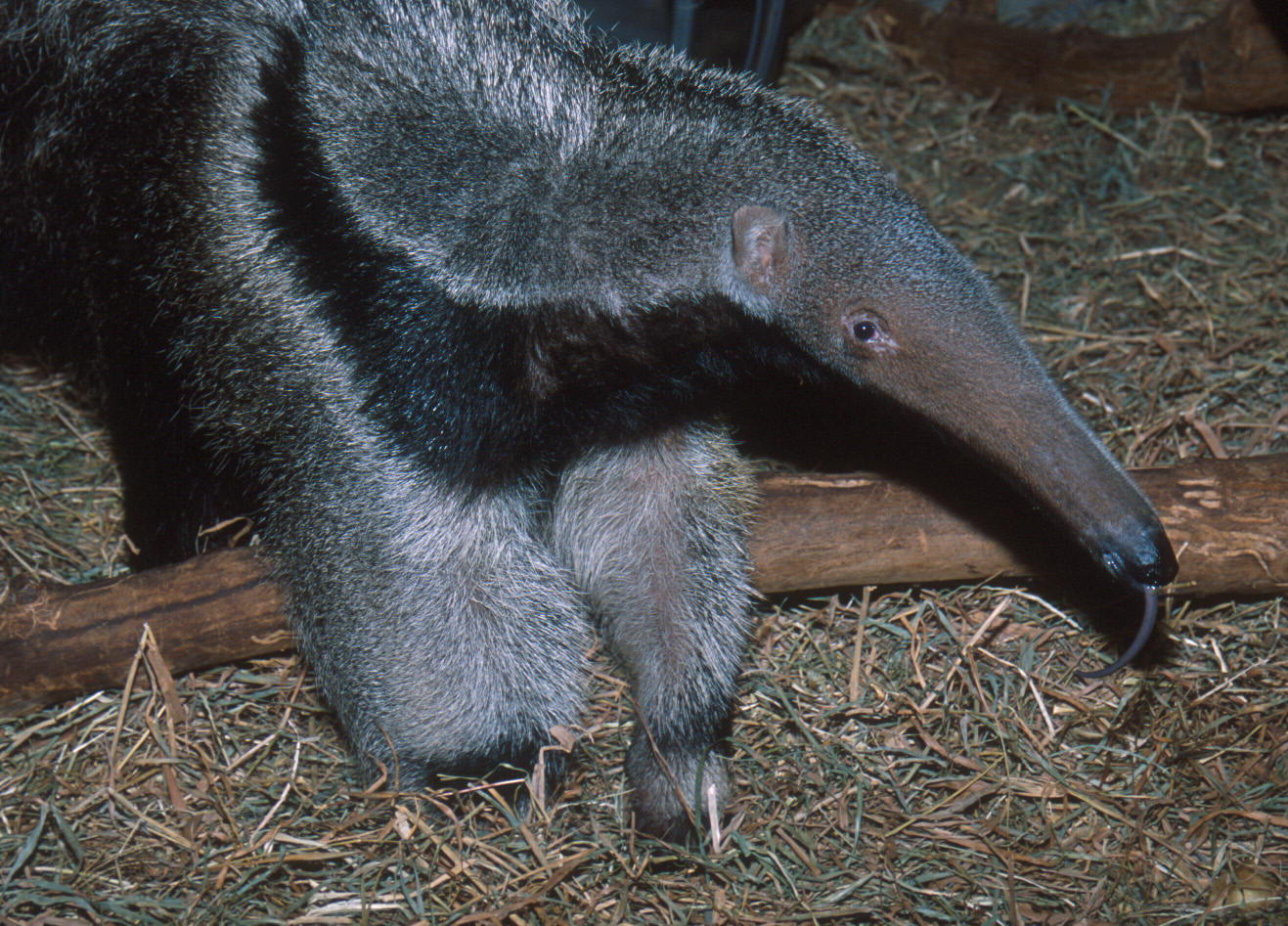Myrmecophaga tridactyla- Giant Anteater
 Adaptations and Interactions
Adaptations and InteractionsAny organism that wants to survive and produce offspring that also survive have to be able to adapt to their environment. Giant anteaters are no different, as they have made several adaptations that have help them live and grow in their environment:
1) A main adaptation has been the way in which they walk. When the walk, they rotate their "wrists" and walk on their knuckles much the same way chimpanzees and gorillas do. They do this to protect their claws that can grow to be very long and they need their claws not only to aid in feeding, but also to aid in defense.
2) The length of their claws have also adapted to their lifestyle over the course of time. They need sharp claws to rip open nests of insects and hard casings on fruit they would like to eat. Without the extended claws on its middle three digits tearing these nests would be hard and coming by food would be very hard to come by. Another way their adapted front long claws has helped is defense. Without the sharp claws, defending themselves would be very hard and many more of them living in the wild would be injured or eaten.
3) Another adaptation giant anteaters have made have been in response to humans moving in on their habitat. Anteaters that live in the wild and have relatively little human interaction are active during the day and rest during the night. In contrast, those that live in zoos and places with high human interactions are nocturnal most of the time; that is they are active during the night and rest for most of the daytime hours.
Interactions
1) The main organisms that giant anteaters have interactions with are, obviously, ants and termites. This is a predatory relationship, with the anteaters being the predators and the ants being the prey.
2) Another predatory interaction the anteater has is with the jaguars and closely related pumas, only this time, the giant anteater is the prey and the jaguars and pumas are the predators.



 All
About Them
All
About Them